Text
Title: Unleash the Magic of Cooking with an Air Fryer.
Introduction
The kitchen has always been a hub of innovation when it comes to cooking techniques and appliances. One such marvel of modern culinary technology is the air fryer. This countertop appliance has taken the culinary world by storm, promising to deliver crispy and delicious results with a fraction of the oil used in traditional frying methods. In this blog, we will explore the world of air fryers, their benefits, tips for using them, and some mouthwatering recipes to get you started.
What is an Air Fryer?
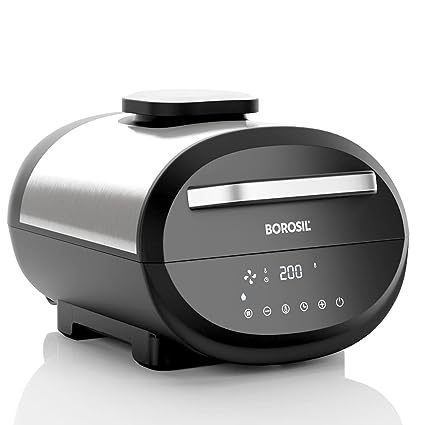
An air fryer is a kitchen appliance that cooks food by circulating hot air around it. It uses a convection fan and a heating element to create a controlled cooking environment, similar to a mini convection oven. The result? Crispy, golden-brown dishes without the need for excessive oil. This makes it a healthier alternative to deep frying while still retaining the desirable texture and flavor of fried food.
Benefits of Using an Air Fryer
https://niya-lifestyle.com/wp-content/uploads/2023/07/2.1-borosil-Ak-air-fryer.jpg

Healthier Cooking: Air fryers require significantly less oil compared to traditional frying methods, making it a healthier option for those looking to cut down on calories and saturated fats.
Speedy Cooking: Air fryers are incredibly efficient and cook food faster than conventional ovens. They preheat quickly and evenly distribute heat, reducing cooking time.
Versatility: While they excel at making crispy fries and chicken wings, air fryers can also be used for baking, roasting, grilling, and even reheating leftovers.
Easy Cleanup: Air fryers typically have non-stick baskets or trays, making them easy to clean. Many parts are also dishwasher safe.
Energy Efficient: Air fryers use less energy compared to large ovens, making them an eco-friendly choice.
Tips for Using Your Air Fryer
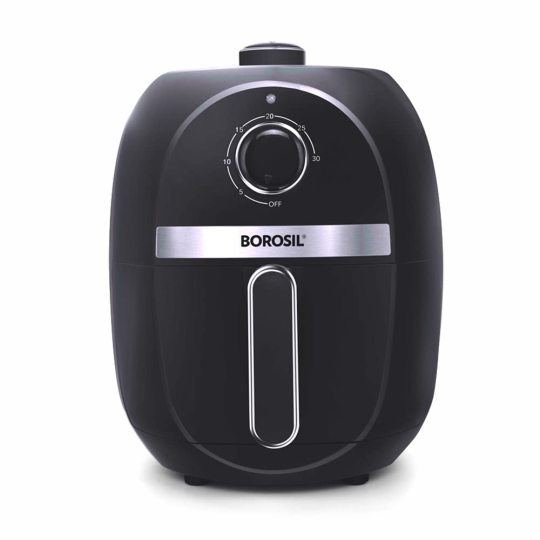
Preheat: Just like with an oven, it's important to preheat your air fryer for a few minutes to ensure even cooking.
Don't Overcrowd: Leave some space between food items to allow air to circulate freely. Overcrowding can result in uneven cooking.
Use a Little Oil: While the goal is to reduce oil, using a light spritz of cooking spray or brushing food with a small amount of oil can enhance the crispiness.
Shake or Flip: To ensure even cooking, shake the basket or flip food halfway through the cooking time.
Experiment with Seasonings: Don't be afraid to get creative with your seasonings and marinades. Experiment with different flavors to elevate your dishes.
Air Fryer Recipes to Try

Crispy Chicken Tenders
Coat chicken tenders with a mixture of breadcrumbs, Parmesan cheese, and your favorite seasonings. Air fry until golden and crispy.
Sweet Potato Fries
Cut sweet potatoes into thin strips, toss with a little olive oil and your choice of spices, and air fry for a healthier alternative to French fries.
Salmon with Lemon and Herbs
Season salmon fillets with lemon juice, herbs, and a touch of olive oil. Air fry until the salmon flakes easily.
Vegetable Chips
Slice vegetables like zucchini, carrots, and beetroot thinly, season, and air fry for a crunchy snack.
Conclusion
Air fryers have revolutionized the way we approach cooking by offering a healthier, faster, and more convenient alternative to traditional frying methods. Whether you're a health-conscious individual looking to cut down on oil or simply a food enthusiast eager to experiment with new recipes, an air fryer is a valuable addition to any kitchen. So, grab your favorite ingredients and start creating crispy and delicious dishes with this modern kitchen marvel. Happy cooking!
#air fryer#toaster oven#kitchen appliances#cookware#kitchen gadgets#fryer#fryer chicken#home appliances#kitchen tools#daily update
0 notes
Text
Title: The Unsung Hero of Sealing Solutions: Exploring the World of Gaskets
Introduction
In the intricate world of engineering and machinery, there exists a crucial component that often goes unnoticed, yet plays a vital role in ensuring the smooth operation of various systems: the gasket. These unassuming pieces of material are the unsung heroes of sealing solutions, preventing leaks, minimizing energy loss, and maintaining the integrity of countless applications. In this blog, we will dive into the fascinating world of gaskets, exploring their types, applications, and significance in various industries.
What Is a Gasket?
A gasket is a mechanical seal that fills the gap between two or more mating surfaces to prevent the leakage of gases or liquids under compression. Gaskets are typically made from a wide range of materials, such as rubber, metal, cork, silicone, and composite materials. The choice of gasket material depends on the specific application, including the temperature, pressure, and chemical compatibility requirements.
Types of Gaskets

Rubber Gaskets: These gaskets are made from various elastomers like neoprene, EPDM, and nitrile rubber. They are known for their flexibility and resistance to moisture and temperature variations. Rubber gaskets find applications in plumbing, automotive, and HVAC systems.
Metal Gaskets: Composed of materials like stainless steel, copper, or aluminum, metal gaskets excel in high-temperature and high-pressure environments. They are commonly used in the oil and gas industry and for sealing flange connections.
Spiral Wound Gaskets: These gaskets are formed by winding a metal strip and a filler material into a spiral. They are ideal for applications where high pressures and temperatures are involved, making them a favorite choice for the chemical and petrochemical industries.
Graphite Gaskets: Known for their excellent heat and chemical resistance, graphite gaskets are often used in high-temperature and high-pressure applications, such as steam systems and refineries.
Non-Asbestos Gaskets: In response to health concerns associated with asbestos, non-asbestos gaskets have become popular. They use materials like aramid fibers and synthetic rubber to provide a safe and effective sealing solution.
Applications of Gaskets

Automotive Industry: Gaskets are used in engines, transmissions, and exhaust systems to prevent leaks and maintain the efficiency of these crucial components.
Plumbing: Gaskets ensure watertight seals in plumbing fixtures and pipelines, preventing water leaks and minimizing water wastage.
Aerospace: Gaskets are employed in aircraft engines and hydraulic systems to withstand extreme temperatures and pressures, ensuring safe and reliable operation.
Oil and Gas: The industry relies heavily on gaskets to seal flange connections, valves, and pipelines, preventing the escape of hazardous materials.
Chemical Industry: Gaskets play a crucial role in chemical processing, where they must withstand aggressive chemicals and high temperatures.
Significance of Gaskets

Gaskets are the unsung heroes of various industries, silently performing their duties to maintain the integrity and safety of systems and equipment. Their significance can be summarized as follows:
Leak Prevention: Gaskets are designed to create a barrier between mating surfaces, preventing the escape of fluids or gases, which is critical for safety, efficiency, and environmental protection.
Energy Efficiency: Properly sealed systems help conserve energy by preventing leaks and reducing heat loss, ultimately leading to cost savings and reduced environmental impact.
Safety: In industries like oil and gas and chemical processing, gaskets are crucial for containing hazardous materials and preventing accidents.
Conclusion
Gaskets may not be the most glamorous components in the world of engineering, but their role in sealing solutions is indispensable. From the engines of our cars to the pipelines of the oil and gas industry, gaskets quietly ensure that everything runs smoothly and safely. As technology advances, gasket materials and designs will continue to evolve, contributing to more efficient and sustainable systems across various industries. So, the next time you see a gasket, remember the unsung hero that it is, working tirelessly to keep our world sealed and secure.
#home & lifestyle#kitchen appliances#cookware#kitchen#gaskets#kitchenware#cooker#daily blog#daily update#home cooking#home lifestyle
2 notes
·
View notes
Text
Title: The Green Revolution in E-commerce: Sustainable Practices and the Future of Online Shopping.
Introduction
E-commerce has taken the world by storm, revolutionizing the way we shop. With the click of a button, consumers can purchase products from around the globe, without ever leaving their homes. This convenience has reshaped the retail landscape, but it has also brought to light the environmental challenges associated with online shopping. In this blog post, we will explore the growing importance of sustainability in e-commerce, the environmental impacts of online shopping, and the innovative solutions that are shaping the future of eco-friendly e-commerce.
I. The Rise of Sustainable E-commerce

Sustainability has become a buzzword in recent years, and e-commerce is no exception. Consumers are increasingly conscious of the environmental footprint of their purchases, and they expect businesses to align with their values. Here are some key factors contributing to the rise of sustainable e-commerce:
Consumer Demand: Shoppers are showing a preference for brands that prioritize sustainability. A Nielsen study found that 81% of global respondents felt strongly that companies should help improve the environment.
Regulatory Pressure: Governments and international organizations are introducing regulations to reduce the environmental impact of e-commerce, such as packaging and shipping materials.
Ethical Business Practices: Companies are recognizing the importance of ethical sourcing, fair labor practices, and transparent supply chains, which are key components of sustainability.
II. Environmental Impacts of E-commerce

While e-commerce offers convenience and accessibility, it also has significant environmental consequences that cannot be ignored:
Packaging Waste: The proliferation of online shopping results in a vast amount of packaging waste, including cardboard boxes, bubble wrap, and plastic envelopes.
Transportation Emissions: The shipping of products to consumers' doorsteps generates carbon emissions, especially when expedited or express shipping is chosen.
Return Logistics: Returns in e-commerce are common, and the reverse logistics process can be inefficient and wasteful.
Energy Consumption: Data centers, warehouses, and delivery vehicles require substantial energy, often sourced from non-renewable resources.
III. Innovative Solutions for Sustainable E-commerce

In response to these challenges, many e-commerce businesses are adopting innovative strategies and technologies to minimize their environmental impact:
Eco-Friendly Packaging: Companies are designing packaging that is recyclable, biodegradable, or reusable, reducing the volume of single-use plastic.
Sustainable Sourcing: Brands are committed to sourcing materials responsibly, such as using organic cotton or recycled materials in clothing production.
Last-Mile Delivery Optimization: Investments in electric vehicles, bike couriers, and advanced route planning are making the last-mile delivery process more efficient and eco-friendly.
Green Warehousing: Warehouses are becoming more energy-efficient, with solar panels, LED lighting, and advanced climate control systems.
Carbon Offsetting: Some e-commerce platforms are investing in carbon offset programs to mitigate the emissions associated with shipping.
IV. The Role of Consumers
Consumers play a crucial role in driving the sustainability agenda in e-commerce:
Conscious Shopping: Making informed choices, such as selecting eco-friendly products or opting for slower shipping methods, can reduce the environmental impact of online purchases.
Support Sustainable Brands: Choose to support businesses that prioritize sustainability and ethical practices.
Reduce Returns: Be mindful of returns, as they contribute to packaging waste and transportation emissions.
Advocate for Change: Consumers have the power to influence businesses through their purchasing decisions and by demanding more sustainable practices.
V. Future Trends and Challenges
The future of sustainable e-commerce holds exciting opportunities and challenges:
Circular Economy: The adoption of circular economy principles, where products are designed to be reused, refurbished, or recycled, will become more common.
Sustainable Tech: Advancements in technology, such as blockchain and AI, will enable greater transparency and traceability in supply chains.
Green Financing: Access to green financing and investments in sustainable initiatives will continue to grow.
Regulatory Compliance: E-commerce businesses will need to adapt to evolving regulations and standards related to sustainability.
Conclusion:
The green revolution in e-commerce is well underway. As consumers become more eco-conscious and governments implement stricter regulations, the e-commerce industry is embracing sustainable practices. From eco-friendly packaging to carbon offset programs, businesses are taking significant steps to reduce their environmental impact. However, the ultimate success of sustainable e-commerce depends on the active participation of consumers who can drive change through their choices and advocacy. By working together, we can ensure that the future of online shopping is both convenient and environmentally responsible.
#home & lifestyle#home appliances#ecommerce#online marketing#online shopping#online sales#sales#entrepreneur#part time jobs
0 notes
Text
Title: The Rise and Popularity of Popup Toasters: A Toast to Modern Breakfasts
Introduction
In today's fast-paced world, where time is a luxury, the humble popup toaster has become an indispensable kitchen appliance. This unassuming kitchen gadget has revolutionized the way we prepare breakfast and snacks, offering convenience, speed, and versatility like never before. In this blog, we will explore the history, evolution, working mechanism, types, and the enduring popularity of popup toasters.
The Early Days of Toasting
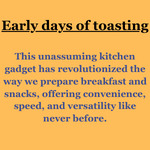
Toasting bread has been a culinary practice for centuries, dating back to the ancient Egyptians and the Romans. Initially, people toasted bread over open flames or on stovetops. This method was not only time-consuming but also resulted in unevenly toasted slices. It was not until the late 19th century that the concept of a mechanical toaster emerged.
The Invention and Evolution

The first patent for an electric toaster was filed in 1893 by Albert Marsh, but it was Charles Striate who made a significant breakthrough in 1921. Stride's automatic bread toaster included a timer and a mechanism that allowed the bread to pop up automatically when done, a feature that laid the foundation for the modern popup toaster. Over the decades, toaster technology continued to evolve, with improvements in temperature control, browning settings, and evenness of toasting.
How Popup Toasters Work

Popup toasters are elegantly simple devices that work on a straightforward principle. When you insert slices of bread into the toaster and activate it, an internal heating element (usually made of nichrome wire) begins to heat up. The bread is held in place by a set of spring-loaded racks. As the heating element warms, it radiates heat, which is absorbed by the bread. The moisture inside the bread evaporates, creating steam and causing the bread to brown. The toaster's thermostat monitors the temperature, ensuring that the bread reaches the desired level of toasting without burning. Once this is achieved, a timer triggers the release mechanism, causing the toasted slices to pop up.
Types of Popup Toasters

Popup toasters come in various types, each catering to specific preferences and needs. The most common types include:
Two-Slice Toasters: These are the most basic and widely used popup toasters, designed for toasting two slices of bread simultaneously. They are compact and suitable for smaller kitchens.
Four-Slice Toasters: Ideal for larger households or when you need to toast more slices at once, four-slice toasters offer convenience and efficiency.
Long Slot Toasters: Long slot toasters are designed to accommodate longer slices of bread or artisanal bread, making them a favorite among those who enjoy specialty bread.
Toaster Ovens: While not traditional popup toasters, toaster ovens have a toasting function and offer more versatility by allowing you to toast, bake, and broil a variety of foods.
High-End Toasters: Some popup toasters come with advanced features like digital displays, multiple toasting options, and even smartphone connectivity, catering to tech-savvy consumers.
The Enduring Popularity

The enduring popularity of popup toasters can be attributed to several factors. Firstly, they offer speed and convenience, allowing you to prepare a quick and delicious breakfast in minutes. Whether you're in a rush to get to work or simply craving a warm slice of toast, popup toasters have you covered. Secondly, they are incredibly easy to use, making them accessible to people of all ages and culinary skills. The consistent and reliable results achieved with a popup toaster have earned it a permanent place in kitchens worldwide.
Additionally, the versatility of popup toasters extends beyond just toasting bread. You can use them to warm up pastries, bagels, and even waffles. Some toasters come with special settings for defrosting frozen items, ensuring your morning routine remains hassle-free.
Conclusion
The popup toaster, a simple yet ingenious invention, has come a long way from its humble beginnings. Its evolution from open flames to advanced, high-tech devices is a testament to human ingenuity and the pursuit of convenience in our daily lives. Whether you prefer a basic two-slice toaster or an advanced, feature-packed model, there's no denying that popup toasters have transformed breakfast preparation, making it easier, faster, and more enjoyable. So, the next time you enjoy a perfectly toasted slice of bread, take a moment to appreciate the remarkable journey that brought this kitchen appliance into your home and made it an integral part of your morning routine.
#home & lifestyle#kitchen appliances#cookware#utensils#toaster oven#bread thoughts#cafe aesthetic#coffee shop#coffetime
1 note
·
View note
Text
Title: The Art and Science of Food Preparation: From Farm to Table.
Introduction
Food preparation is an essential and universal human activity that transcends cultural boundaries. It's the art of transforming raw ingredients into delicious and nourishing meals, showcasing creativity, skill, and love for food. Whether you're a seasoned chef or a home cook, understanding the fundamentals of food preparation is key to creating memorable culinary experiences. In this blog, we will explore the fascinating world of food preparation, from the sourcing of ingredients to the techniques and tools that elevate your dishes.
I. Sourcing the Best Ingredients

Farm to Table Philosophy: The journey of food preparation begins with selecting the finest ingredients. Embracing the farm-to-table philosophy ensures that you use fresh, locally sourced produce that not only tastes better but also supports local farmers and reduces your carbon footprint.
Seasonality Matters: Different seasons bring a variety of fresh ingredients to the table. Learn to embrace seasonality and adapt your recipes to the available produce, ensuring better flavor and sustainability.
Quality over Quantity: In food preparation, the quality of your ingredients can make or break a dish. Invest in high-quality staples like olive oil, spices, and herbs to elevate your cooking.
II. The Art of Food Preparation

Knife Skills: A fundamental skill in food preparation is mastering the use of knives. Learn the different types of knives and their purposes, as well as the proper techniques for chopping, slicing, and dicing.
Flavor Development: Understanding how flavors work together is crucial in creating harmonious dishes. Explore the principles of taste - sweet, salty, sour, bitter, and umami - and how to balance them in your cooking.
Techniques and Methods: Familiarize yourself with various cooking techniques, from sautéing and roasting to braising and steaming. Each method brings out unique flavors and textures in your ingredients.
III. Essential Tools and Equipment

Cookware: Your choice of pots, pans, and bakeware can significantly impact your food preparation. Discover which materials and types of cookware are best suited for different cooking methods.
Kitchen Gadgets: From blenders and food processors to mandolins and thermometers, modern kitchen gadgets can save time and enhance precision in your food preparation.
IV. The Culinary World Beyond Your Comfort Zone

International Cuisine: Expand your horizons by exploring international cuisines. Learning about the traditional ingredients and techniques of various cultures can inspire new dishes and flavors in your food preparation.
Experimental Cooking: Don't be afraid to experiment in the kitchen. Food preparation is also about creativity. Try new combinations, techniques, and ingredients to develop your unique signature dishes.
V. Sustainability in Food Preparation
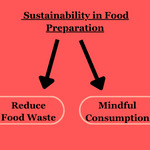
Reduce Food Waste: Food waste is a global issue. Discover ways to reduce waste in your food preparation, such as using leftovers creatively and composting organic waste.
Mindful Consumption: Understand the impact of your food choices on the environment. Opt for sustainable seafood, choose plant-based options, and reduce meat consumption to lessen your ecological footprint.
Conclusion
Food preparation is more than just a daily chore; it's an art form that connects us to our heritage, our communities, and our planet. Whether you're a novice in the kitchen or an experienced chef, there is always room to grow and explore in the world of food preparation. By sourcing the best ingredients, honing your skills, embracing diverse techniques, and prioritizing sustainability, you can create culinary masterpieces that nourish both body and soul. So, roll up your sleeves, put on your apron, and embark on a lifelong journey of culinary discovery and delight.
#home & lifestyle#cooking#presentation#home cooking#kitchen appliances#home appliances#cookware#daily blog#cuisine#consumption#food waste#international cuisine#kitchen gadgets#knife skills#flavor combination#quality over quantity#quality of life#seasonality
1 note
·
View note
Text
Title: A Comprehensive Guide to Cooktops: Choosing the Right One for Your Kitchen.
Introduction
Cooking is an essential part of our daily lives, and the cooktop is the heart of every kitchen. Whether you're a professional chef or a home cook, having the right cooktop can make a significant difference in your cooking experience. In this comprehensive guide, we'll explore the world of cooktops, discussing the different types, features, and considerations that will help you make an informed decision when choosing the perfect cooktop for your kitchen.
I. Types of Cooktops
There are several types of cooktops available on the market, each with its own set of features and advantages. Let's take a closer look at the most common types:

Gas Cooktops
Gas cooktops are a classic choice for many home chefs. They provide instant heat and precise temperature control, making them ideal for tasks that require quick adjustments.
Key features include open flames, burners with various heat outputs, and the ability to cook with a wide range of cookware materials.
Pros: Quick heating, precise control, even heat distribution, suitable for all cookware types.
Cons: May require a gas hookup, can be less energy-efficient, and harder to clean.
Electric Cooktops
Electric cooktops come in two main subtypes: coil and smoothtop (also known as glass or ceramic).
Coil cooktops use metal heating elements under the cookware, while smoothtops have a flat, glass-ceramic surface with integrated heating elements.
Pros: Easy to clean (smoothtops), even heat distribution, no need for gas hookup, variety of sizes and styles.
Cons: Slower heating and cooling (coil), may not work well with certain cookware, higher energy consumption.
Induction Cooktops
Induction cooktops use electromagnetic fields to heat the cookware directly, resulting in rapid and precise temperature control.
They're known for their efficiency and safety, as they only heat the cookware, not the surface, reducing the risk of burns.
Pros: Fast heating, precise temperature control, energy-efficient, safe to touch, easy to clean.
Cons: Requires induction-compatible cookware, typically more expensive upfront.
II. Factors to Consider
When choosing a cooktop for your kitchen, several factors should influence your decision:
Kitchen Layout
Consider the available space and layout of your kitchen. Ensure the chosen cooktop fits seamlessly into your countertop or kitchen island.

Fuel Type
Decide whether you prefer gas, electric, or induction. Your choice may depend on your cooking style, budget, and the availability of gas lines.
Cooking Style
Your cooking habits and the types of dishes you prepare most frequently should guide your choice. For example, professional chefs often prefer gas cooktops for their precise control, while induction cooktops are excellent for fast and efficient cooking.
Energy Efficiency
Think about energy consumption and long-term costs. Induction cooktops are generally the most energy-efficient, followed by electric smoothtops and gas cooktops.
Budget
Cooktop prices can vary significantly. Set a budget that aligns with your needs and preferences, and be prepared to invest in a quality cooktop that will last.
Cookware Compatibility
Ensure your existing cookware is compatible with the chosen cooktop. Induction cooktops, for instance, require magnetic cookware.
Safety Features
Look for safety features like child locks, overheating protection, and automatic shutoff timers, especially if you have young children or are safety-conscious.
Maintenance and Cleaning
Consider ease of maintenance and cleaning. Smoothtops are generally easier to clean than gas cooktops with burners and grates.

Aesthetics
Your cooktop's appearance matters too. Choose a style and finish that complements your kitchen's design and décor.
III. Special Features
Modern cooktops often come with various special features that can enhance your cooking experience. Here are some notable ones to look for:

Bridge Elements
Some cooktops have bridge elements that can combine two burners into one, making them ideal for griddles and larger pans.
Wi-Fi Connectivity
High-tech cooktops may offer Wi-Fi connectivity, allowing you to control and monitor your cooking remotely using a smartphone app.
Touch Controls
Many electric and induction cooktops feature touch controls for easy and precise adjustments.
Power Boost
This feature temporarily increases the heat output to bring water to a boil quickly or sear food effectively.
Simmer Function
A simmer function ensures low, steady heat for delicate tasks like melting chocolate or simmering sauces.
Timer Functions
Timers with auto-shutoff can help prevent overcooking or burning.
Safety Sensors
Advanced safety sensors can detect overheating and automatically turn off the cooktop to prevent accidents.
Grate Design
Gas cooktops often come with various grate designs, such as continuous grates that provide a stable surface for larger pots and pans.
IV. Installation and Maintenance
Proper installation and maintenance are crucial for the longevity and safety of your cooktop. Here are some essential tips:
Professional Installation
For gas cooktops, it's essential to have a licensed professional install the gas line and the cooktop itself to ensure safety and compliance with local regulations.
Regular Cleaning
Clean your cooktop regularly according to the manufacturer's instructions. Smooth tops and induction cooktops are generally easier to clean than gas cooktops.
Avoid Harsh Cleaners
Use mild, non-abrasive cleaners to avoid damaging the cooktop surface. For stubborn stains, special cooktop cleaning creams are available.
Check Burner Alignment
For gas cooktops, periodically check the alignment of the burners and ensure they ignite properly.
Ventilation
Proper ventilation is essential when cooking with gas cooktops to remove odors and prevent the buildup of harmful gases. Consider installing a range hood if you don't already have one.
V. Popular Brands and Models

While there are many reputable brands and models to choose from, here are a few popular ones known for their quality cooktops:
Bosch
Bosch offers a range of gas, electric, and induction cooktops known for their reliability and sleek design.
GE
General Electric offers a wide selection of cooktops, including induction and gas options, with various features and price points.
KitchenAid
KitchenAid is renowned for its high-quality gas and induction cooktops, often favored by professional chefs.
Samsung
Samsung's induction cooktops are known for their innovative features and modern aesthetics.
Wolf
Wolf is a premium brand specializing in high-end gas and induction cooktops favored by culinary enthusiasts.
Conclusion
Choosing the right cooktop for your kitchen is a decision that can greatly impact your cooking experience. Consider factors like your cooking style, kitchen layout, and budget, as well as the special features and maintenance requirements that matter most to you. By taking these factors into
1 note
·
View note
Text
The Wafer- A Comprehensive Guide
Introduction
Wafers are an integral part of modern electronics, serving as the foundational substrate for semiconductor devices. They come in various sizes and materials, each with its unique characteristics and applications. In this comprehensive guide, we will delve into the world of wafers, starting from the basic concept and progressing through to more advanced topics. We will explore the journey of a wafer from its raw form (H1) to its highly processed state (H6), shedding light on the crucial stages and transformations along the way.
1) Understanding the Basics of Wafers
Wafers in their rawest form, known as H1 wafers, are typically made of crystalline silicon. These wafers are sliced from a larger, cylindrical ingot produced through a process called the Czochralski method. The H1 wafers are usually cylindrical and have a rough surface. Their initial thickness can vary, typically ranging from 500 to 1000 micrometers.

1.1. Wafer Materials
Silicon Wafers: Predominantly used in semiconductor manufacturing due to silicon's excellent semiconductor properties.
Other Semiconductor Materials: Silicon carbide (SiC), gallium arsenide (GaAs), and more, depending on specific applications.
1.2. Wafer Diameters
Common wafer sizes include 100mm (4 inches), 150mm (6 inches), 200mm (8 inches), and 300mm (12 inches).
Larger diameters yield more semiconductor chips per wafer, increasing efficiency and reducing costs.
1.3. Wafer Surface Characteristics
Roughness: H1 wafers have a rough surface that needs to be polished for semiconductor processing.
Orientation: Crystallographic orientation (e.g., <100>, <111>) affects the wafer's properties.
2) Wafer Processing
The transformation from H1 to H2 wafers involves cleaning and polishing the rough surface of H1 wafers. This critical step is necessary for creating a pristine, defect-free surface suitable for semiconductor fabrication.
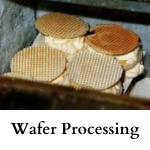
2.1. Cleaning
Chemical cleaning methods remove contaminants and organic residues.
Ultrasonic baths and high-purity chemicals are used to achieve cleanliness standards.
2.2. Polishing
Mechanical and chemical-mechanical polishing (CMP) techniques are employed to remove surface imperfections.
This results in smoother, flatter wafers, typically with a mirror-like finish.
3) Wafer Doping
wafers undergo a doping process to introduce controlled impurities into the silicon crystal lattice. This step is crucial for creating the desired electrical properties in semiconductor devices.

3.1. Dopant Materials
Common dopants include boron (p-type) and phosphorus (n-type).
Controlled doping levels determine the electrical behavior of the semiconductor.
3.2. Diffusion and Ion Implantation
Techniques like diffusion and ion implantation are used to introduce dopants into the wafer's surface.
Precise control over doping profiles is essential for semiconductor performance.
4) Wafer Thin-Film Deposition
wafers involve the deposition of thin films on the wafer's surface. These thin films serve various purposes, including insulation, conductive layers, and transistor gate materials.

4.1. Deposition Techniques
Chemical vapor deposition (CVD), physical vapor deposition (PVD), and atomic layer deposition (ALD) are common methods.
Each technique offers unique advantages for specific applications.
4.2. Thin-Film Materials
Oxides, nitrides, metals, and polysilicon are commonly deposited materials.
Thin films are patterned and etched to create intricate structures on the wafer.
5) Photolithography
wafers involve the application of photolithography, a crucial step for defining intricate patterns on the wafer's surface. This process is integral to semiconductor device fabrication.

5.1. Photolithography Process
Photoresist coating, exposure to UV light through a mask, and chemical development define patterns.
Multiple lithography steps are needed to create complex semiconductor structures.
5.2. Resolution and Mask Alignments
Advancements in photolithography technology enable higher resolution and smaller feature sizes.
Precision mask alignment systems are crucial to achieving accurate patterning.
6) Wafer Etching
wafers involve the selective removal of material from the wafer's surface through etching processes. Etching is used for various purposes, such as removing unwanted material or shaping semiconductor structures.

6.1. Wet Etching
Immersing wafers in chemical solutions to remove material selectively.
Common chemicals include acids and bases tailored to specific materials.
6.2. Dry Etching
Plasma-based techniques for precision etching.
Reactive ion etching (RIE) and deep reactive ion etching (DRIE) are examples.
Conclusion
From its humble H1 form as a rough, raw silicon cylinder to its highly processed H6 state with intricate semiconductor structures, the wafer undergoes a remarkable transformation. Each step in the wafer fabrication process plays a vital role in shaping the final semiconductor device's performance and functionality. Understanding this journey from H1 to H6 is essential for anyone interested in the world of electronics and semiconductor manufacturing. As technology continues to advance, the world of wafers and semiconductor fabrication will undoubtedly evolve, pushing the boundaries of what is possible in the realm of electronics.
#wafers#vanilla wafers#chocolate wafer crust#wafer rolls#chocolate cookies#grocery#daily blog#daily life#cookies#brownies#dessert#chocolate room
0 notes
Text
Title: The Sweet Journey of Biscuits and Rolls: A Delectable Tale
Introduction
Biscuits and rolls are two quintessential baked goods that have won the hearts and taste buds of people worldwide. These humble treats may seem simple, but they carry with them a rich history and a world of flavors. Join us on a delightful journey through the fascinating world of biscuits and rolls.
Chapter 1: The Biscuit Bonanza
Biscuits, known by various names like cookies (in the USA), biscuits (in the UK), or gallates (in Spanish-speaking countries), have a universal appeal. They're a delightful accompaniment to tea or coffee and can be enjoyed on their own. The history of biscuits dates back centuries when they were first created as a means to preserve grains and provide sustenance to travelers. Today, they come in countless shapes, sizes, and flavors.

1.1 Origins of Biscuits
Biscuits can trace their roots to ancient civilizations like the Egyptians and Romans, who baked basic bread-like snacks. However, the modern concept of biscuits as sweet treats began to evolve during the Middle Ages when sugar and spices became more accessible.

1.2 Classic Biscuits
Explore the world of classic biscuits, from the buttery shortbread of Scotland to the chocolate chip cookies of America. Learn about the cultural significance of biscuits, such as gingerbread houses during Christmas and fortune cookies in Chinese cuisine.
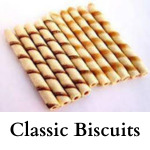
Chapter 2: The Magic of Rolls
Rolls, on the other hand, are a versatile breed of baked goods that can be found in various forms across the globe. From soft dinner rolls to crispy spring rolls, they come in a wide range of textures and flavors, making them a beloved part of many cuisines.

2.1 The Versatility of Rolls
Rolls play a significant role in many culinary traditions. Discover the story behind the French croissant, the Japanese sushi roll, and the beloved cinnamon roll, which originated in Sweden.
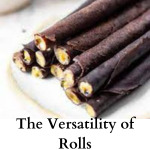
2.2 Techniques and Traditions
Learn about the different techniques involved in making rolls, such as yeast-based dough for fluffy bread rolls and rice paper for Vietnamese spring rolls. Explore the cultural traditions associated with specific types of rolls, like the significance of baguettes in French culture.
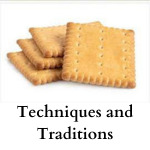
Chapter 3: Biscuit vs. Roll - A Delicious Dilemma
While biscuits and rolls each have their unique charm, they share common characteristics too. Explore the similarities and differences between these baked delights and find out when to choose one over the other.

3.1 Texture and Taste
Understand the key factors that differentiate biscuits from rolls, such as texture, sweetness, and leavening agents. Discover the pleasure of biting into a flaky biscuit and the satisfaction of savoring a warm, soft roll.
3.2 When to Enjoy Biscuits and Rolls
Learn about the appropriate occasions to indulge in biscuits and rolls. Whether you're having a cozy breakfast in bed, a fancy afternoon tea, or a hearty dinner, there's a biscuit or roll for every moment.
Conclusion
Biscuits and rolls may seem like simple baked goods, but they carry a world of flavors, history, and cultural significance. From the delicate intricacies of biscuits to the versatility of rolls, these treats have a special place in our hearts and kitchens. Whether you prefer a classic chocolate chip cookie or a fresh-out-of-the-oven dinner roll, these beloved snacks will continue to sweeten our lives for generations to come. So, the next time you savor a biscuit or roll, remember the delightful journey they've been on, and appreciate the culinary diversity they bring to our tables.
#grocery#dark chocolate#chocolate cookies#biscuits#chocolate room#cookies#crunchyroll#crunchy chip cookie#dark choco cookie#chocolate
0 notes
Text
"The Perfect Blend: A Guide to Mixers and Grinders"
Introduction
In the world of modern kitchen appliances, mixers and grinders have become indispensable tools for every home cook and professional chef alike. Whether you're whipping up a smoothie, grinding spices for a flavorful curry, or preparing a batch of cookie dough, mixers and grinders play a vital role in making your culinary adventures a breeze. In this blog post, we'll take a closer look at these versatile kitchen companions, exploring their types, uses, and essential features.
Types of Mixers and Grinders
Mixers and grinders come in various types, each designed for specific tasks in the kitchen. Let's explore the most common ones:
1. Stand Mixers
Stand mixers are a chef's best friend when it comes to baking and whipping. They feature a stationary base with a mixing bowl and a rotating arm with various attachments like beaters, whisks, and dough hooks. Stand mixers are perfect for mixing batters, kneading dough, and beating egg whites to perfection. A stand mixer is a kitchen appliance designed to simplify and automate various food preparation tasks, particularly mixing and blending ingredients for baking and cooking. It consists of a motorized base with a stand, a mixing bowl, and an assortment of attachments and accessories.

2. Hand Mixers
Hand mixers are handheld appliances with beaters or whisks that you can use to blend ingredients without the need for a separate bowl. They are excellent for light to medium mixing tasks like whipping cream or preparing pancake batter. A hand mixer is a compact and versatile kitchen appliance designed for blending, whipping, and mixing ingredients manually. It consists of a handheld unit with beaters or attachments that rotate when powered by an electric motor. Hand mixers are ideal for tasks like beating eggs, whipping cream, mixing cake batters, and preparing lighter doughs. These mixers are more portable and space-efficient than their larger stand mixer counterparts, making them a popular choice for smaller kitchens or for those who have limited storage space. Hand mixers typically offer multiple speed settings to control the intensity of mixing, and some models come with additional attachments, such as dough hooks and balloon whisks, to enhance their versatility.

3. Blender Grinders
Blender grinders, as the name suggests, combine the functions of a blender and grinder. They can blend smoothies, puree soups, and grind spices or coffee beans. Many models come with multiple jars and blades for different tasks. Blender grinders typically come with different attachments or blades for these various tasks. Some models may even include additional features like chopping, crushing ice, and kneading dough. When using a blender grinder, make sure to follow the manufacturer's instructions for each specific task to ensure safe and efficient operation .If you have any specific questions about using a blender grinder or if you're looking for recommendations on particular brands or models, please provide more details, and I'll be happy to assist you further.

4. Food Processors
Food processors are versatile machines that can chop, slice, dice, shred, and even knead dough. While they excel at food prep tasks, some models also come with blender attachments to handle blending and grinding. A food processor is a versatile kitchen appliance designed to simplify and expedite various food preparation tasks. It consists of a motorized base with different attachments and blades that can be used for chopping, slicing, grating, pureeing, mixing, and even kneading dough. Food processors come in various sizes and models, ranging from compact units for basic tasks to larger, more powerful machines suitable for professional use.

5. Coffee Grinders
Coffee lovers rejoice! Coffee grinders are specifically designed to grind coffee beans to your desired coarseness. They come in manual and electric variants, ensuring you get the perfect grind for your brewing method. A coffee grinder is a kitchen appliance used to grind coffee beans into a fine or coarse powder, depending on the desired brewing method. Grinding your own coffee beans just before brewing can significantly enhance the flavor and aroma of your coffee, as freshly ground beans release their oils and flavors more effectively than pre-ground coffee.

Conclusion: mixers and grinders are essential kitchen appliances that offer a wide range of benefits for home cooks and culinary enthusiasts. Whether you're a professional chef or someone who enjoys preparing meals at home, these appliances can simplify and enhance your cooking experience in several ways.
#home & lifestyle#home appliances#kitchen#kitchen appliances#mixer#grinder#juicer blender juice blenderportable blendermurah juicing mixer shakentake juicerportable portableblender handblender in juicermurah choppe
1 note
·
View note
Text
The Daily Shopping Ritual: A Dive into Everyday Consumerism
Introduction
In our fast-paced modern lives, daily shopping has become an integral part of our routines. Whether it's picking up groceries, grabbing a morning coffee, or browsing online for the latest deals, daily shopping is a constant presence. This blog will delve into the world of daily shopping, its impact on our lives, and how we can make more conscious choices as consumers.
The Morning Essentials
For many of us, the day begins with a trip to the local coffee shop or a quick visit to the kitchen to brew our morning coffee. This simple act of purchasing a cup of coffee or a bag of beans contributes to the global coffee industry, which is worth billions of dollars. But daily coffee runs are not just about caffeine; they often serve as a morning ritual, providing a sense of comfort and familiarity.
However, we should also be aware of the environmental and financial costs associated with daily coffee consumption. Single-use coffee cups, plastic lids, and disposable stirrers contribute to the world's plastic waste problem. By investing in a reusable coffee mug and supporting coffee shops that prioritize sustainability, we can reduce our environmental footprint.

Grocery Shopping: A Daily Necessity
Another crucial aspect of daily shopping is grocery shopping. We visit supermarkets or local markets to stock up on fresh produce, pantry staples, and household essentials. The choices we make during these trips can have far-reaching consequences, both for our health and the environment.
Opting for whole, unprocessed foods over heavily packaged, processed items can improve our well-being and reduce our carbon footprint. By buying locally sourced produce, we support local farmers and reduce the environmental impact of long-distance transportation.

The Convenience of Online Shopping
In the digital age, daily shopping has expanded beyond physical stores. E-commerce platforms offer the convenience of shopping from our homes or workplaces. While this convenience is undeniably appealing, it's essential to be mindful of our online shopping habits.
Frequent online shopping can lead to impulsive purchases and unnecessary clutter in our lives. To make more sustainable choices, consider the environmental impact of shipping and packaging, and try to consolidate your orders to reduce the carbon footprint.

The Power of Conscious Consumerism
Daily shopping, whether in physical stores or online, provides us with the opportunity to make conscious choices. By supporting businesses that prioritize sustainability, ethical sourcing, and fair labor practices, we can contribute to a more responsible consumer culture.
Moreover, we can reduce waste by opting for reusable products, recycling, and upcycling items whenever possible. Small changes in our daily shopping habits can add up to a significant positive impact on the environment.

Conclusion
Daily shopping is a routine we engage in without much thought, but it's worth pausing to consider its implications. By being mindful of our choices and their impact on our health, finances, and the environment, we can make daily shopping a more conscious and responsible activity. Every purchase we make has the potential to shape our world for the better, one step at a time.
0 notes
Text
"Navigating the Aisles: A Comprehensive Guide to Smart Grocery Shopping"
Introduction
Grocery shopping is a routine task that most of us undertake regularly. Whether you love strolling through the aisles, meticulously planning your meals, or you consider it a necessary chore, making the most of your grocery trips can benefit your wallet, health, and the environment. In this blog post, we'll delve into the world of grocery shopping and explore tips, tricks, and strategies to make your trips more efficient, budget-friendly, and environmentally conscious.
Plan Ahead
The key to a successful grocery trip begins before you even set foot in the store. Start by creating a meal plan for the week. This helps you make a shopping list with specific items, reducing impulse buys and food waste. Plan your meals around what you already have in your pantry, fridge, or freezer to minimize waste and save money.

Make a Detailed Shopping List
Your shopping list is your guiding star. Organize it by categories (e.g., produce, dairy, meat) to navigate the store efficiently. Use digital apps or pen and paper - whichever works best for you. Always carry a pen to check off items as you go.

Choose the Right Time to Shop
Picking the right time to shop can make a big difference. Avoid peak hours to steer clear of long lines and crowded aisles. Early mornings or late evenings on weekdays are often quieter.

Consider Online Shopping
Online grocery shopping has become increasingly popular. It saves time and allows you to compare prices and reviews easily. Just be mindful of delivery fees and minimum purchase requirements.

Explore Store Layout
Familiarize yourself with the store layout. Most stores place staples like bread, milk, and eggs at the back to encourage you to explore more aisles. Stick to your list and avoid unnecessary detours.

Check for Sales and Discounts
Keep an eye out for sales, discounts, and coupons. Many stores offer loyalty programs and digital coupons that can save you money on your purchases.

Buy in Bulk (Wisely)
Buying in bulk can be cost-effective for non-perishable items like pasta, rice, or canned goods. However, be cautious about perishables and items with limited shelf life unless you have a plan for their use.

Choose Fresh and Seasonal Produce
Opt for fresh, seasonal fruits and vegetables. They are often more affordable and taste better. Plus, buying locally-sourced produce reduces your carbon footprint.

Minimize Packaging Waste
Be mindful of excessive packaging. Choose products with eco-friendly packaging, and bring your reusable bags. Consider buying in bulk to reduce single-use packaging.

Check Expiry Dates
Always check the expiry dates on perishable and non-perishable items. Rotate older items to the front of your pantry or fridge to ensure they are used before fresher purchases.

Think About Health
Make conscious choices about the nutritional value of the items you purchase. Reading food labels can help you make healthier choices.

Stay Organized at Home
Once you've completed your grocery shopping, organize your items at home. Store perishables properly, and keep a designated area for snacks and ready-to-eat items to avoid food waste.

Conclusion
Smart grocery shopping is a skill that can save you money, reduce food waste, and contribute to a healthier lifestyle. By planning ahead, making a detailed shopping list, and adopting eco-conscious practices, you can transform your grocery trips from mundane tasks into efficient, budget-friendly, and environmentally friendly endeavors. So, the next time you head to the store, remember these tips to make your shopping experience a breeze. Happy shopping!
1 note
·
View note
Text
Title: Exploring the Different Types of Speakers: A Sound Odyssey
Introduction
Speakers are an integral part of our daily lives, providing us with the gift of sound. From music to movies, from public announcements to personal conversations, speakers play a vital role in transmitting audio information. But did you know that there are various types of speakers, each designed for specific purposes and environments? In this blog, we will embark on a journey through the fascinating world of speakers, uncovering the different types and their unique characteristics.
. Dynamic Speakers

Dynamic speakers, also known as moving-coil speakers, are the most common type of speaker you'll encounter. They operate on the principle of electromagnetic induction. An electric current passes through a coil of wire (the voice coil) attached to a diaphragm (the cone). As the current varies, it causes the voice coil to move back and forth, which, in turn, vibrates the cone, producing sound. Dynamic speakers are found in everything from home audio systems to car stereos.
Electrostatic Speakers

Electrostatic speakers are a high-fidelity option that relies on the movement of a thin diaphragm suspended between two perforated plates. When an audio signal is applied to these plates, they create an electrostatic field that moves the diaphragm, producing sound. These speakers are known for their incredible clarity and detail but are often more expensive and require careful setup.
Piezoelectric Speakers
Piezoelectric speakers are small, compact speakers that use the piezoelectric effect to produce sound. When an electrical voltage is applied to certain materials like quartz crystals, they deform, creating mechanical vibrations that generate sound waves. These speakers are commonly used in beepers, alarms, and some portable electronic devices.
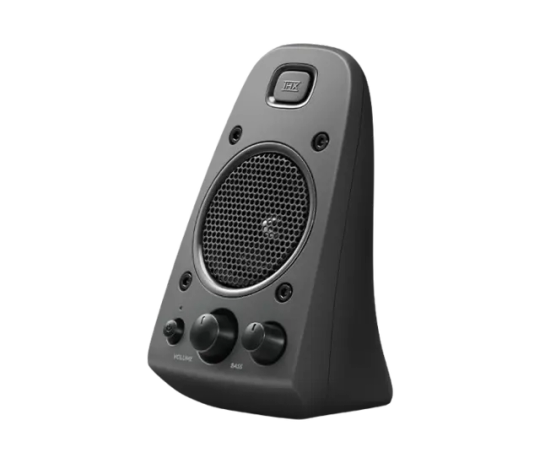
Horn Speakers
Horn speakers are designed for high-efficiency sound projection. They use a flared horn-shaped enclosure to amplify and direct sound waves. These speakers are often used in public address systems, outdoor events, and in environments where a loud, focused sound is required.

Subwoofers
Subwoofers are specialized speakers designed to reproduce low-frequency bass sounds. They have large drivers and are commonly used in home theaters and car audio systems to enhance the overall audio experience by adding depth to the sound.

Full-Range Speakers
Full-range speakers are designed to reproduce a wide range of frequencies, from low bass to high treble, in a single unit. They are commonly used in smaller audio systems, such as computer speakers and portable Bluetooth speakers.

Bookshelf Speakers
Bookshelf speakers, as the name suggests, are compact speakers designed to fit on bookshelves or other elevated surfaces. They are ideal for home audio systems and can deliver high-quality sound in a relatively small form factor.

Ceiling and In-Wall Speakers
These speakers are designed to be installed directly into ceilings or walls, making them a discreet option for home audio systems and home theaters. They are often used for background music or surround sound applications.

Conclusion
Speakers come in various shapes and sizes, each tailored to specific audio needs and preferences. Whether you're looking for high-fidelity sound, booming bass, or unobtrusive design, there's a speaker type that suits your requirements. Understanding the different types of speakers empowers you to make informed choices when setting up your audio systems or selecting speakers for various applications. So, the next time you enjoy your favorite music or immerse yourself in a movie, take a moment to appreciate the engineering and diversity of speakers that make it all possible.
1 note
·
View note
Text
"Exploring the Sweet World of Chocolate: A Journey through Different Types"
Introduction
Chocolate, with its rich and velvety flavor, has been a beloved treat for centuries. Whether you enjoy it as a snack, a dessert, or an ingredient in various dishes, chocolate comes in a multitude of forms, each offering a unique taste and texture. In this blog post, we will embark on a delightful journey to explore the diverse world of chocolate, from the creamy milk chocolate to the sophisticated dark varieties.
Milk Chocolate
Milk chocolate is perhaps the most well-known type of chocolate. It's made from cocoa solids, cocoa butter, milk solids, and sugar. The addition of milk powder gives it a smooth, creamy texture and a sweeter flavor compared to other chocolates. Milk chocolate is a favorite for many, often used in candy bars, truffles, and hot cocoa. Its milder taste makes it an excellent choice for those who are new to the world of chocolate

2. Dark Chocolate
Dark chocolate, on the other hand, is favored by those who appreciate a deeper, more intense chocolate experience. It contains a higher percentage of cocoa solids and less sugar, resulting in a bittersweet or semi-sweet taste. Dark chocolate can vary in cocoa content, ranging from 50% to 90% or more. The higher the cocoa content, the more pronounced the chocolate flavor and potential health benefits, such as antioxidants.

3. White Chocolate
White chocolate is a unique member of the chocolate family, primarily because it doesn't contain cocoa solids. Instead, it's made from cocoa butter, sugar, and milk solids. This absence of cocoa solids gives white chocolate its creamy, ivory appearance and a sweeter, vanilla-like flavor. While some purists debate whether it should be considered "real" chocolate, its delightful taste makes it a popular choice in desserts like white chocolate macadamia nut cookies and white chocolate mochas.

4. Ruby Chocolate
Ruby chocolate is the newest addition to the chocolate family. Developed in recent years, it has a striking pinkish-red hue and a fruity, berry-like flavor. Ruby chocolate is made from specially processed ruby cocoa beans, and it doesn't contain any artificial coloring or fruit flavoring. Its unique taste and color have made it a sensation in the culinary world, with confectioners and chefs incorporating it into a variety of desserts and pastries.

5. Bittersweet and Semi-Sweet Chocolate
Bittersweet and semi-sweet chocolates fall under the dark chocolate category but have subtle differences in sweetness levels. Bittersweet chocolate typically contains a higher cocoa content, making it less sweet and ideal for baking, while semi-sweet chocolate is slightly sweeter and commonly used in chocolate chips for cookies. Both options are versatile and can be used interchangeably in recipes, depending on your taste preferences.

6. Couverture Chocolate
Couverture chocolate is a high-quality chocolate with a high cocoa butter content, making it perfect for tempering and coating confections. It's often used by chocolatiers and pastry chefs for making truffles, chocolate-covered fruits, and glossy chocolate coatings for cakes and desserts. Its smooth texture and excellent melting properties make it a top choice for professional chocolate work.

Conclusion
The world of chocolate is as diverse as it is delicious. Whether you have a sweet tooth for creamy milk chocolate, a taste for the sophisticated bitterness of dark chocolate, or a craving for the unique flavors of ruby or white chocolate, there's a chocolate variety to satisfy every palate. So, the next time you reach for a piece of chocolate, take a moment to appreciate the rich history and delightful diversity of this beloved treat. Whether it's for a special occasion or just a simple pleasure, chocolate never fails to bring joy to our taste buds and warmth to our hearts.
#chocolate#dessert#frosting#chocolate cookies#chocolate bark#couverture#ruby.txt#bittersweet#milk#chocolate shake#dark chocolate#dark choco cookie#chocolate syrup#cookies#brown
0 notes
Text
"Wired vs. Wireless Keyboards: Which One is Right for You?"
Keyboards are an integral part of our daily computing experience, and the choice between wired and wireless keyboards can significantly impact your comfort and productivity. Both types of keyboards have their own advantages and disadvantages, and understanding their differences can help you make an informed decision. In this article, we'll explore the features, benefits, and drawbacks of wired and wireless keyboards to help you determine which one suits your needs best.
Wired Keyboards:
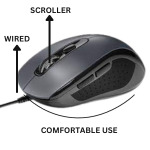
Reliable Connection: Wired keyboards are known for their rock-solid reliability. They connect directly to your computer through a USB cable, ensuring a stable and uninterrupted connection. This is crucial for tasks that require precise and rapid keystrokes, such as gaming and data entry.
No Battery Hassles: Since wired keyboards draw power directly from the computer, you never have to worry about changing or charging batteries. They are always ready for use when your computer is on.
Lower Latency: Wired keyboards generally have lower input latency compared to wireless ones. This makes them a preferred choice for gamers and professionals who demand split-second responsiveness.
Cost-Efficiency: Wired keyboards tend to be more budget-friendly than wireless alternatives. You don't need to invest in batteries or worry about replacing them over time.
Minimal Interference: Wired keyboards are not susceptible to interference from other wireless devices, ensuring a consistent typing experience even in crowded environments
Wireless Keyboards:

Freedom of Movement: Wireless keyboards offer the convenience of typing from a distance. This is particularly useful if you prefer a clutter-free workspace or want to control your computer from a distance, such as during presentations.
Portability: Wireless keyboards are highly portable and ideal for those who frequently switch between different devices. They can be easily connected to laptops, tablets, or even smartphones without the need for additional adapters.
Aesthetics: Wireless keyboards often have a sleek and modern design, with fewer cables cluttering your desk. They can contribute to a cleaner and more organized workspace.
Bluetooth Connectivity: Many wireless keyboards use Bluetooth technology, allowing for quick and seamless pairing with compatible devices. Bluetooth keyboards are versatile and can work with a wide range of gadgets.
Battery Life: While wireless keyboards require batteries, they often have long battery life. Some models can last months or even years on a single set of batteries, depending on usage.
Conclusion
The choice between wired and wireless keyboards ultimately depends on your specific needs and preferences. If you prioritize stability, low latency, and cost-efficiency, a wired keyboard is an excellent choice. On the other hand, if you value freedom of movement, portability, and a clutter-free workspace, a wireless keyboard may be more suitable.
Consider your usage scenarios and determine what features matter most to you. Some users even opt for a hybrid approach, using a wired keyboard for intensive tasks and a wireless one for convenience when needed. Whichever you choose, both wired and wireless keyboards have their merits and will continue to be essential tools in the world of computing.
1 note
·
View note
Text
Vege cutter
A vegetable cutter, also known as a vegetable chopper or slicer, is a kitchen tool designed to make the process of cutting, chopping, and slicing vegetables more efficient and convenient. These devices come in various shapes, sizes, and designs, but they all serve the same basic purpose: to help you prepare vegetables quickly and with minimal effort. Here are some common types of vegetable cutters:
Manual Vegetable Chopper: This type of cutter usually consists of a container with a grid of sharp blades or attachments. You place the vegetable inside, press down on the lid, and the blades chop or dice the vegetable.

Mandoline Slicer: A mandoline slicer has an adjustable blade and a flat platform with a handguard. You slide the vegetable back and forth across the blade to create thin, even slices.
Food Processor: Food processors come with various attachments, including slicing and shredding discs, that allow you to prepare a wide range of vegetables quickly. Some food processors also have special attachments for julienning or spiralizing.

Electric Vegetable Chopper: These are electrically powered devices that automate the chopping process. You place the vegetables in a container, press a button, and the machine does the chopping for you.

Spiralizer: A spiralizer is used to turn vegetables like zucchini, carrots, and potatoes into noodle-like shapes. It can be used to make vegetable noodles for dishes like zoodles (zucchini noodles.

Julienne Peeler: This is a simple tool that allows you to create thin, uniform strips or julienne cuts of vegetables. It looks like a regular peeler but has a serrated blade.
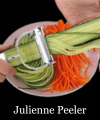
Conclusion: The choice of a vegetable cutter depends on your specific needs and preferences. Manual choppers and mandolin slicers are good for small-scale chopping and slicing, while food processors and electric choppers are more suitable for larger quantities and a wider range of tasks. Spiralizers and julienne peelers are specialized tools for creating unique vegetable shapes.
When using any type of vegetable cutter, it's essential to follow safety guidelines, especially with sharp blades and moving parts, to prevent accidents and injuries. Always read the manufacturer's instructions and exercise caution while handling these kitchen tools.
#vegetable chopper#piller#spiralizer#electric chopper#julienne#food processor#food processing equipment#the mandolarian#home appliances#kitchen#utensilski#kitchen appliances#kitchen tools#utensils
0 notes
Text
The Iron-Clad Guide to Understanding Clothing Irons
In our fast-paced world, clothing irons are often underappreciated. Yet, they play a crucial role in our daily lives, ensuring our clothes are wrinkle-free and presentable. This blog aims to unravel the mysteries of clothing irons, helping you make informed choices and master the art of ironing.
1)The Anatomy of a Clothing Iron:
Soleplate: The flat, heated surface that comes into direct contact with your clothing. It can be made of stainless steel, ceramic, or non-stick materials.
Water Tank: Most irons have a water tank for steam generation. Some even have a separate compartment for fabric softeners or scents.
Temperature Control: Allows you to adjust the iron's heat based on the fabric you're ironing. Common settings include cotton, wool, silk, and linen.
Steam Function: This feature releases steam to help remove wrinkles more effectively. It's especially useful for stubborn creases.
Cord: The power cord connects the iron to an electrical outlet. Some models come with retractable cords for convenience.
Choosing the Right Iron

2)Selecting the right iron depends on your needs and preferences:
Steam vs. Dry Iron: Steam irons are versatile and suitable for most fabrics, while dry irons are better for delicate materials.
Size and Weight: Consider the iron's size and weight; heavier irons may work better on tough wrinkles, but lighter ones are more manageable.
Soleplate Material: A stainless steel soleplate is durable and glides smoothly, while a non-stick soleplate is gentler on delicate fabrics.
Wattage: Higher wattage irons heat up faster and maintain temperature more effectively.
Cord Length: Ensure the cord length is convenient for your ironing setup.
Ironing Techniques

3)Mastering ironing techniques can make your clothes look professionally pressed:
Preparation: Check clothing labels for recommended ironing temperatures. Sort your clothes by fabric type.
Steam Function: For stubborn wrinkles, use the steam function. Hold the iron slightly above the fabric and press the steam button.
Ironing Order: Iron clothes inside out to prevent shine on delicate fabrics. Start with the lowest heat setting and gradually increase it as needed.
Collars and Cuffs: Iron these areas carefully, paying attention to details.
Storage: Always empty the water tank and store your iron in an upright position to prevent leaks.
Maintaining Your Iron
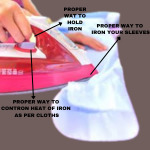
4)To ensure your iron lasts, follow these maintenance tips:
Clean the Soleplate: Use a damp cloth and mild detergent to clean the soleplate regularly.
Descaling: If you live in an area with hard water, descale your iron to prevent mineral buildup.
Empty the Water Tank: After each use, empty the water tank to prevent mold and bacterial growth.
Storage: Store your iron in a cool, dry place.
Conclusion: Clothing irons are indispensable household appliances that deserve more credit for their role in keeping our clothes looking sharp. By understanding their features, choosing the right iron, mastering ironing techniques, and maintaining it properly, you can ensure your clothing always looks its best. So, embrace the iron and make wrinkles a thing of the past in your wardrobe!
#iron maiden#clothing#home appliances#home lifestyle#ecommerce#daily blog#everyday life#cookware#kettle
2 notes
·
View notes
Text
"Elevate Your Culinary Journey: A Food for Life Blog on Essential Kitchen Appliances"
Introduction: Welcome to our Food for Life blog, where we embark on a culinary journey that will transform the way you cook and eat. In this series, we will explore the must-have kitchen appliances that can make your life in the kitchen easier, more efficient, and more enjoyable. Whether you're a seasoned chef or a novice cook, these appliances will be your trusty companions in creating delectable dishes that nourish both body and soul.
Chapter 1: The Multifunctional Food Processor In our first chapter, we dive into the world of food processors. Discover how this versatile appliance can save you time and effort while enabling you to create a variety of recipes, from smooth hummus to perfectly chopped vegetables for stir-fries. We'll also share some innovative tips and recipes that showcase the food processor's full potential.

Chapter 2: Mastering Precision with the Induction Cooktop Induction cooktops have taken the cooking world by storm, offering precise temperature control and faster cooking times. In this chapter, we'll explore how an induction cooktop can revolutionize your cooking experience, from searing meats to simmering sauces. We'll also share some pro tips on choosing the right cookware for induction cooking.

Chapter 3: The Instant Pot Revolution The Instant Pot has become a beloved kitchen appliance for many, thanks to its ability to pressure cook, slow cook, sauté, and more, all in one pot. We'll delve into the magic of the Instant Pot and provide you with a range of recipes, from hearty stews to decadent desserts, that you can whip up effortlessly.

Chapter 4: Unleashing Creativity with the Blender Blenders are more than just tools for making smoothies. In this chapter, we'll explore the world of high-performance blenders and their ability to craft silky soups, creamy nut butters, and even homemade ice cream. Get ready to experiment with unique flavor combinations and nutritious blends.

Chapter 5: The Power of Steam: Convection Steam Ovens Convection steam ovens are a game-changer for anyone who loves baking, roasting, or steaming. Learn how these ovens combine the benefits of steam and convection cooking to produce perfectly crisp and moist dishes. We'll share baking tips, roast recipes, and the science behind steam cooking.

Chapter 6: The Ultimate Coffee Experience For coffee enthusiasts, a well-equipped kitchen must include a high-quality coffee maker or espresso machine. In this chapter, we'll explore the art of brewing the perfect cup of coffee and crafting specialty espresso drinks like a barista. We'll also introduce you to the world of single-origin beans and coffee brewing techniques.

Chapter 7: Smart Kitchen Technology As technology advances, so do our kitchen appliances. In this final chapter, we'll take a glimpse into the future of cooking with smart kitchen appliances. From Wi-Fi-enabled ovens to AI-powered recipe suggestions, discover how technology is shaping the way we prepare and enjoy food.
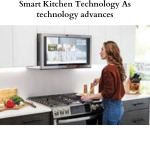
Conclusion: Join us on this culinary adventure as we explore the world of kitchen appliances that elevate your cooking experience and help you nourish yourself and your loved ones with delicious meals. Whether you're a foodie, a health-conscious cook, or simply someone who enjoys good food, our Food for Life blog is here to inspire and inform. Get ready to transform your kitchen into a haven of culinary creativity and flavor exploration.
2 notes
·
View notes